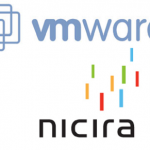How to Research Your Native American Ancestors

You want to find out as much as you can about the ancestor in question. To begin finding out as much information as possible contact all your oldest relatives and ask them if they know anything about the ancestor. Have a list of questions ready. Try to discover what the surname is if possible, and any other information such as towns the person might have lived in, where and when the person was born, their parent’s names, and any stories they might know about the person’s life. All of these things can yield clues to the tribal identity of your ancestor.
Keep in mind when doing your research that back in the 18th and 19th centuries it was not necessarily a good thing to be Indian, it was not uncommon for someone who was Native American and trying to blend in to say they were black Irish, or French for example. So if you run across names which don’t sound like they would be “Indian” don’t be discouraged. It’s entirely possible you have an ancestor who went into hiding. Another thing to take into account is that there were mixed marriages, it’s possible your ancestor married a non-Indian and changed their name that way, or they themselves might not have been full-blooded but had a parent who was white and so they took their name. Something else that happened particularly in the 1800’s when Indians were being removed to reservations is that white bureaucracy would give Indians white first and last names because they couldn’t pronounce the Native ones.
So, now you have a surname, maybe a few stories related to the ancestor and possibly where they were born or where they lived. All of these things can yield good results if you know where to look. Now what do you do?
Now you begin searching for more information on your ancestor. The LDS Church has made available many of its genealogy records online which prior to the mid 1990’s you had to actually go to one of their local family history centers to be able to access. Your next stop should be www.familysearch.com where you can put in the name of your ancestor, and see if anyone else has done the genealogy work for you. Make sure you don’t check the box for “exact spelling” so that it will search for all names which are similarly spelled as well. Sometimes going through the names particularly if it is a common one can be exhausting, but also worth it. One of two things may happen, you my find that someone has already done the research for you, right down to what tribe the person is and their enrollment number. If so then you are done, you’ve traced your ancestor, found him/her and you have the proof you wanted that you are indeed of Native heritage.
But what if you didn’t find your ancestor, what if no one did the research for you, or you found conflicting information and you don’t trust what you found to be accurate? Or what if the ancestor was there but there was no information on if they were Indian or what tribe they were?
Your next step is to research what tribes lived in the area where your ancestor was born or lived. Chances are you will discover more than one, so make a list. Your next task is to see if your ancestor is on any of the tribal rolls for the tribes in the area they lived or were born in. While you can write the Bureau of Indian Affairs, or the tribe itself with your ancestor’s name this would be the long way around the issue. While in the end you may have to resort to this, some tribal rolls are online so you should begin your search there in the event the tribes you are looking for are accessible that way.
It’s important to remember you may not find the proof you are looking for by conventional means. In other words you may not find your ancestor on any of the tribal rolls, or on the LDS ancestry pages, or through any other avenue but you shouldn’t lose hope. A final option particularly if what you are truly interested in is proof that you have Native American ancestry is DNA testing. While not inexpensive DNA testing can tell you what tribal group you are descended from and in some cases exactly which tribe. Often it is just the knowing where you come from that is what can give you the knowledge you are seeking. Also once you know you can begin to learn about your tribe by researching it, speaking to present day members, and even learning the language. Unlike your ancestor you for the most part do not have to worry about being discriminated against if you claim your Native heritage. So getting in touch with it, and passing it on to the next generation so that it isn’t lost to future generations should ultimately be the goal of any of us who have Native American ancestry.




